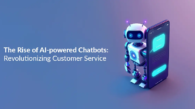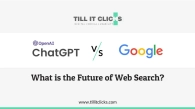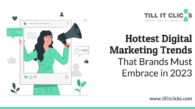In today's fast-paced digital era, businesses are constantly seeking innovative ways to enhance customer service and improve efficiency. One technology that has emerged as a game-changer in this realm is AI-powered chatbots. These intelligent virtual ...
Captivate and Retain Customers with Premier UI/UX Design
/*! elementor - v3.20.0 - 26-03-2024 */ .elementor-heading-title{padding:0;margin:0;line-height:1}.elementor-widget-heading .elementor-heading-title>a{color:inherit;font-size:inherit;line-height:inherit}.elementor-widget-heading .elementor-heading-ti ...
One of my closest friends, just had a heart attack at 35.
The call came out of nowhere. His wife, with a voice both calm and strained, informed me that this dude had undergone angioplasty overnight and was thankfully recovering well. Visiting him brought a mix of emotions. I saw his smile and felt relieved. ...
Sora: Charting the Future of Creativity and Innovation in Agency Business
The advent of Sora by OpenAI is not just a technological breakthrough; it's a paradigm shift in the digital agency landscape. This AI-driven platform, capable of transforming text prompts into rich, detailed video content, heralds a new era of creati ...
Elevate Your Ecommerce Business with These Top Marketing Strategies
The COVID-19 pandemic has had a significant impact on the ecommerce industry, with many people turning to online shopping as a result of lockdowns, quarantines, and social distancing measures. Because of the pandemic, There has been a sharp increase ...
ChatGPT Vs Google: What is the Future of Web Search?
“I have stopped using Google Search now”, said a friend. “I just go to ChatGPT and ask questions.” I was astonished. It is possible that the technology behind ChatGPT or other similar language models could be used to improve natural language process ...
Hottest Digital Marketing Trends that Brands Must Embrace in 2023
As 2023 dawns, the world is at an unsure place. While Crypto has seen a lot of ups and downs, there is almost no doubt that blockchain is here to stay. Although Metaverse was the talk of the town at the beginning of 2022, suddenly its buzz has quie ...
6 Reasons Why Blogging is Absolutely Necessary for Your Business
A vital part of today’s online culture is blogging. Initially, the concept of blogging came about when individuals started sharing personal details online and started treating blogs as personal journals. It eventually was adopted by companies of all ...
An Introduction To The Concept Of Contest Marketing
In a world where millions of brands are trying to secure the ‘Top Of Recall’ spot in our minds, it comes as no surprise that marketers all over the world try to come up with ingenious ways to capture the attention of customers. One of the most yieldi ...
Why Now Is The Best Time For Investing in OTT Ads?
Does this sound familiar – You have been contemplating taking a holiday and randomly see an ad for a cheap flight ticket while playing a game or you see great deals for a holiday resort while playing your favourite videos. These are all called OTT Ad ...










